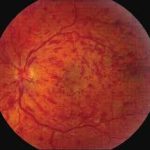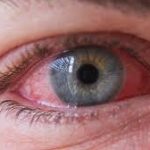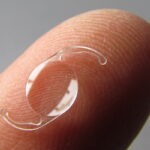
Glaucoma Overview
Glaucoma is a group of eye diseases in which the optic nerve is damaged by the eye pressure of the aqueous fluid inside your eyeball. It can affect one or both of your eyes and will cause blindness if it is not treated. According to the WHO, it is the 2nd most common cause of blindness in the world.

Image source MayoClinic
The several types of glaucoma are
- Open Angle Glaucoma (also known as Chronic Glaucoma) is the most common type
- Narrow Angle Glaucoma (also known as Acute Glaucoma)
- Low Tension Glaucoma (where the eye pressure is normal but optic nerve still gets damaged)
Ocular Hypertension is the stage where you have high eye pressures but where there is NO nerve damage. However, you still need to have regular eye check and glaucoma eye examination done (around 1-2 times yearly) to make sure it does NOT progress to glaucoma.
Pattern of Glaucoma Visual Loss
Glaucoma visual loss is due to damage to the nerve fibres at the optic nerve caused by the eye pressure and/or reduced blood supply. The visual loss starts with loss of peripheral vision because the peripheral nerve fibres get damaged first. As such, most people with glaucoma are not aware of the early stages of glaucoma because their central vision remains good until more than half the vision is lost. This is reason why people AT RISK are recommended to have eye examination by the eye doctor (known as ophthalmologist).

Source. Research gate
Treatment of Glaucoma
Glaucoma treatment aims to prevent or slow down this progressive loss of vision. Treatment is NOT able to reverse the pre-existing glaucoma damage and as such, it is IMPORTANT to get your glaucoma treated as EARLY as possible. If glaucoma is LEFT UNTREATED, the high eye pressure will cause you to have gradual progressive loss of peripheral vision until complete blindness. The treatment options, your ophthalmologist may choose for you include;
It is important to undergo Glaucoma Eye Examination by your eye doctor regularly (between every 3-6 months) to monitor your eye pressures (if you are at risk) and/or glaucoma control (if you are on glaucoma treatment)


Disclaimer. TELEME blog posts contains general information about health conditions and treatments. It is not intended to be a substitute for professional medical advice, diagnosis or treatment. The information is not advice and should not be treated as such.
If you think you may be suffering from any medical condition, you should seek immediate medical attention from your doctor or other professional healthcare providers. You should never delay seeking medical advice, disregard medical advice, or discontinue medical treatment because of information on this website.







